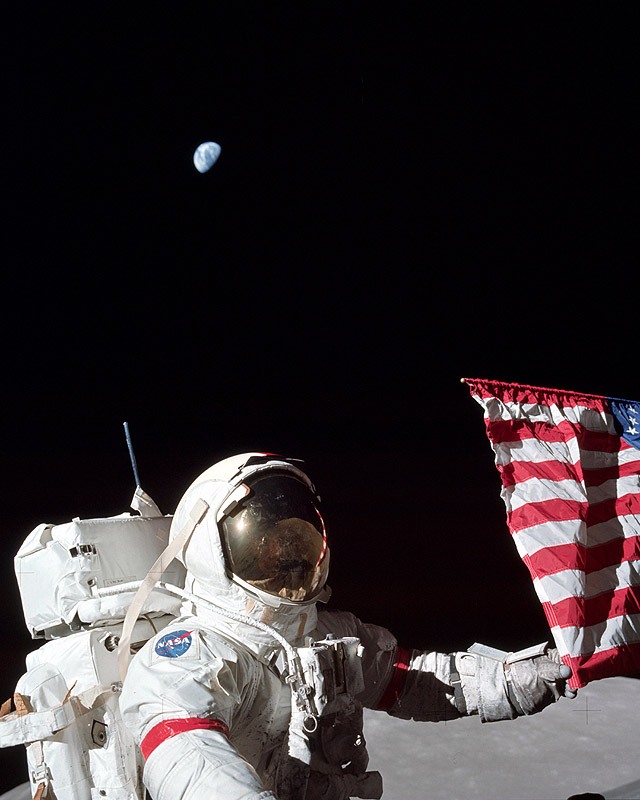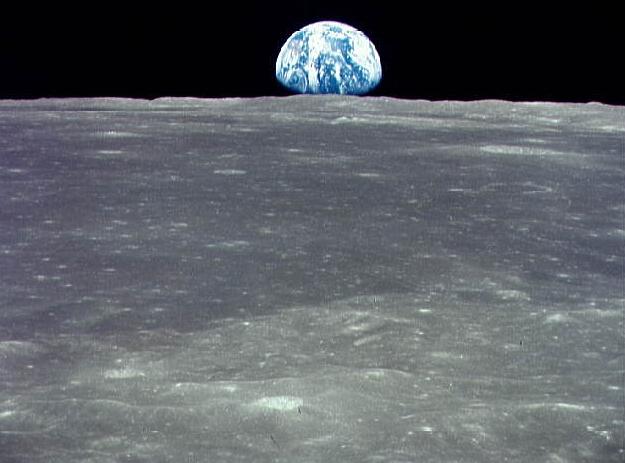Copyright 2014 Robert Clark
The full Moon sometimes looks huge when it's low on the horizon. I was
wondering if the same effect would occur on the Moon if we saw a full phase
Earth from the lunar surface.
There haven't been many pictures taken from the surface of the Moon that
show the Earth. Here's one:
The Earth can look pretty large low on the horizon from lunar orbit even
when not at full phase as shown by this Apollo 11 image taken from orbit:
Are there images taken from the lunar surface either by robots or manned
missions that show the Earth rise at or close to full phase?
Nice article by Dr. Pauls Spudis:
Earth Rising.
Earth as seen from the Moon is always in the same place – true or false? It
depends.
By Paul D. Spudis
May 15, 2014
Thus, there are places on the Moon from which we can stand and
contemplate the sheer beauty and magnificence of a slowly rising Earth.
Given the sea change in global perspective provided by the famous Earthrise
picture taken by the Apollo 8 crew almost fifty years ago, what societal
impacts will occur when a human being stands on the lunar surface and
watches the Earth slowly rise above the horizon? I suspect that a similar
shift in planetary perspective will occur. If history is any guide, such a
shift will have profound psychological and political implications – both
positive and negative – in our reach for the stars.
http://www.airspacemag.com/daily-planet/earth-rising-180951474/#ixzz321FRfV82
I wonder if a Google Lunar X-Prize entrant could land at one of the
locations where Earthrise would be visible.
Bob Clark





2 comments:
The moon looks large close to the horizon to humans because of a perceptual distortion mostly-hard-wired into our brains. In the stone age, things on the ground were more dangerous to you as a caveman than things way up high. We see them "larger" to accentuate the perceived danger, even though the geometric optics say the images are actually the same size.
You can, with patience and effort and practice, train yourself not to see in this distorted way, although the tendency will always be there because of the hard-wiring. I did, and I have not seen a "large" moon low to horizon in many, many years. Unless I actually look for it.
As for the photos of the Earth from the moon, the diameter of the earth on the print depends on the scale of the print, and the geometry of the camera optics. Prints scaled the same, taken with the same camera, will show the same object as the same printed size.
GW
These two videos are recorded using Celestia software, from perspective of the surface of the moon, locked on to the local orbit.
From the moon's front facing side, and the equator region, we would see multiple phases of the earth per lunar month. We would also see both of the earth's poles.
https://www.youtube.com/watch?v=Za9YWLXOxWk
We would also see the the earth visiting the boundaries of all 12 constellations of the zodiac once a month:
https://www.youtube.com/watch?v=nZcqNoVyfvE
This is assuming we could withstand the intense radiation experienced during the long-lasting lunar midday. I believe all previous manned lander missions have taken place during the lunar twilight to minimise this problem.
Post a Comment